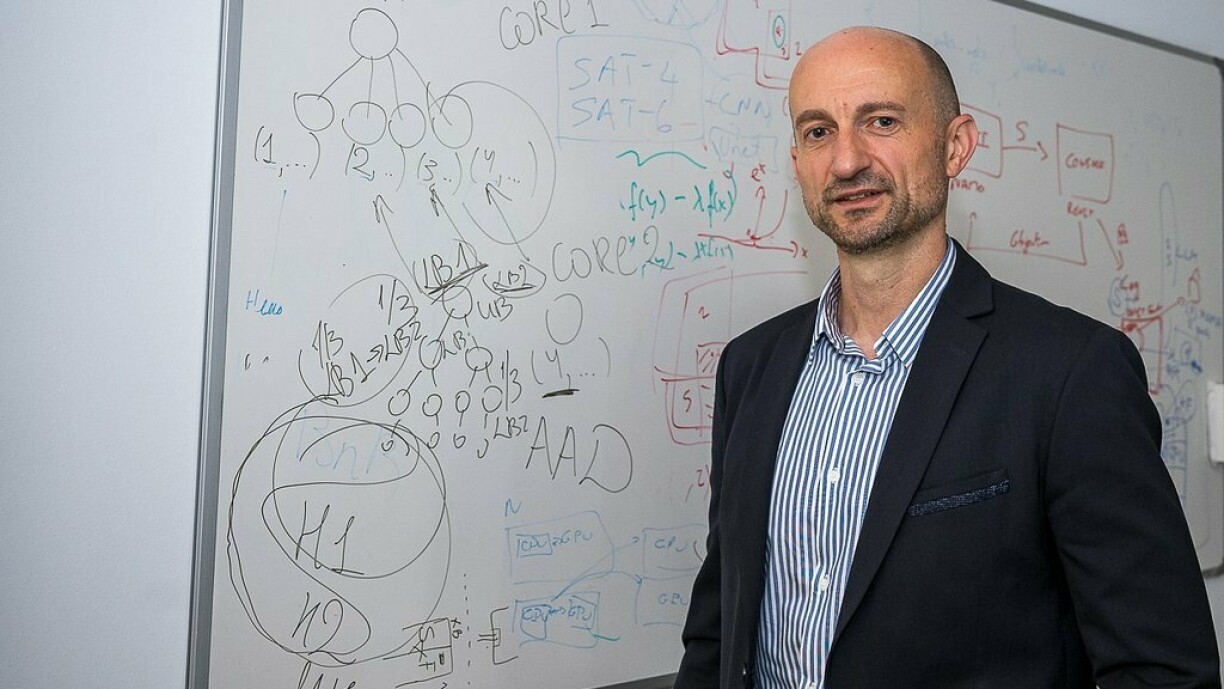
Dr Grégoire Danoy recently provided our colleagues from RTL.lu with an exclusive look into the latest developments in drone research at his lab in Esch-Belval. Drones are finding increasingly diverse applications, from photography and agriculture to parcel delivery and military operations.
At the University of Luxembourg, significant research efforts are underway, particularly in the field of artificial intelligence (AI) for drones. Dr Danoy leads a team of computer scientists at Belval specialising in this area.
In their lab at Maison du Nombre, researchers demonstrate how drones can autonomously navigate in formation. For instance, they showcase how a civilian drone intruding into an airport’s no-fly zone can be intercepted by a swarm of Nano drones.
Dr Danoy emphasises the importance of developing AI methods that provide local control of individual drones while ensuring effective overall behaviour of the swarm to fulfil mission objectives.

Currently, drones are typically operated individually, but the future could see the deployment of entire swarms. This approach draws inspiration from nature, with mathematical models emulating the behaviours of ants or bees in AI.
Researchers aim to replicate nature’s decision-making processes in their AI algorithms, where each drone makes decisions based on its observations and received information.
Thanks to ongoing research at the University of Luxembourg in Esch-Belval, drones are poised to revolutionise various sectors, including building inspection and environmental monitoring for forest fires or pollution.
Dr Danoy envisions drones conducting missions with greater speed, efficiency, and reliability. With distributed intelligence, the drones can adapt dynamically to changing circumstances, ensuring mission continuity even if individual drones encounter technical issues.

In the future, drone operations will require less manpower, with one person overseeing multiple devices and tasks, including battery replacement. However, Dr Danoy notes that drone shows, increasingly popular as alternatives to fireworks, differ from these AI-driven applications. While drone shows follow pre-programmed sequences, AI-enabled drones possess the capability to react to real-time situations and make decisions autonomously, allowing for learning and adaptive behaviour during missions.
Dr Danoy offers a practical example of how AI-driven drones can save lives. In search and rescue operations over vast areas such as forests or at sea, Nano drones equipped with artificial intelligence can optimise search patterns, enhancing effectiveness and efficiency.
Despite a decade of research in Luxembourg, challenges persist, particularly regarding battery limitations, which currently restrict drone usage. Additionally, outdoor testing in Luxembourg is hampered by regulatory requirements mandating a pilot for each drone.
Grégoire Danoy pauses for a moment before addressing the question of whether artificial intelligence can still make mistakes. While numerous people are already using ChatGPT, many will have noticed a disclaimer on these AI models that makes it clear that the results may contain errors. “However, this is not unlike humans,” notes Grégoire Danoy, who leads the Parallel Computing and Optimisation Group (PCOG).
The use of drones by military forces has garnered significant attention since the conflict in Ukraine began. Objects that serve both civilian and military purposes are termed “dual-use.”
Drones fall into this category, and Dr Danoy confirms that research at the University of Luxembourg remains theoretical. “Our research primarily contributes to the theoretical understanding of drone swarm mobility and is openly available through scientific publications,” he explains.
Read also: Luxembourg prepares for drone delivery of medical samples